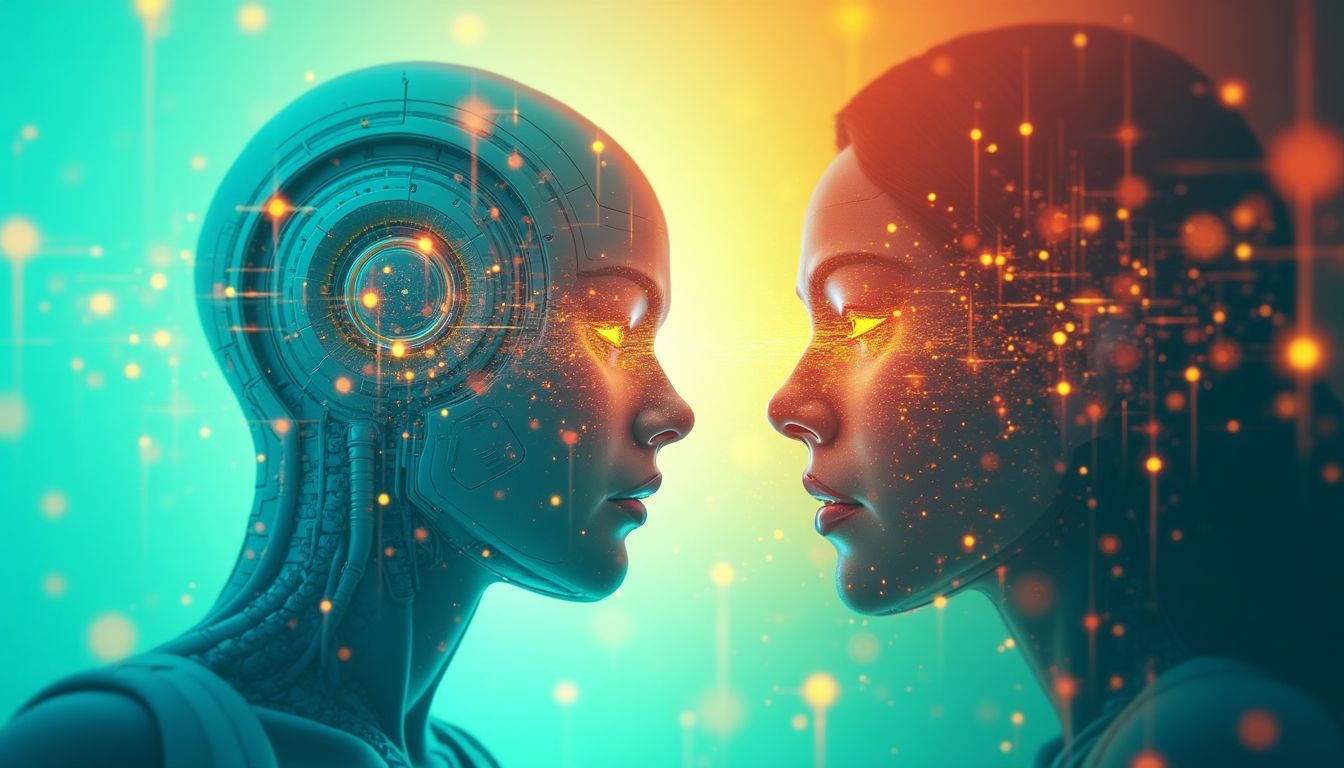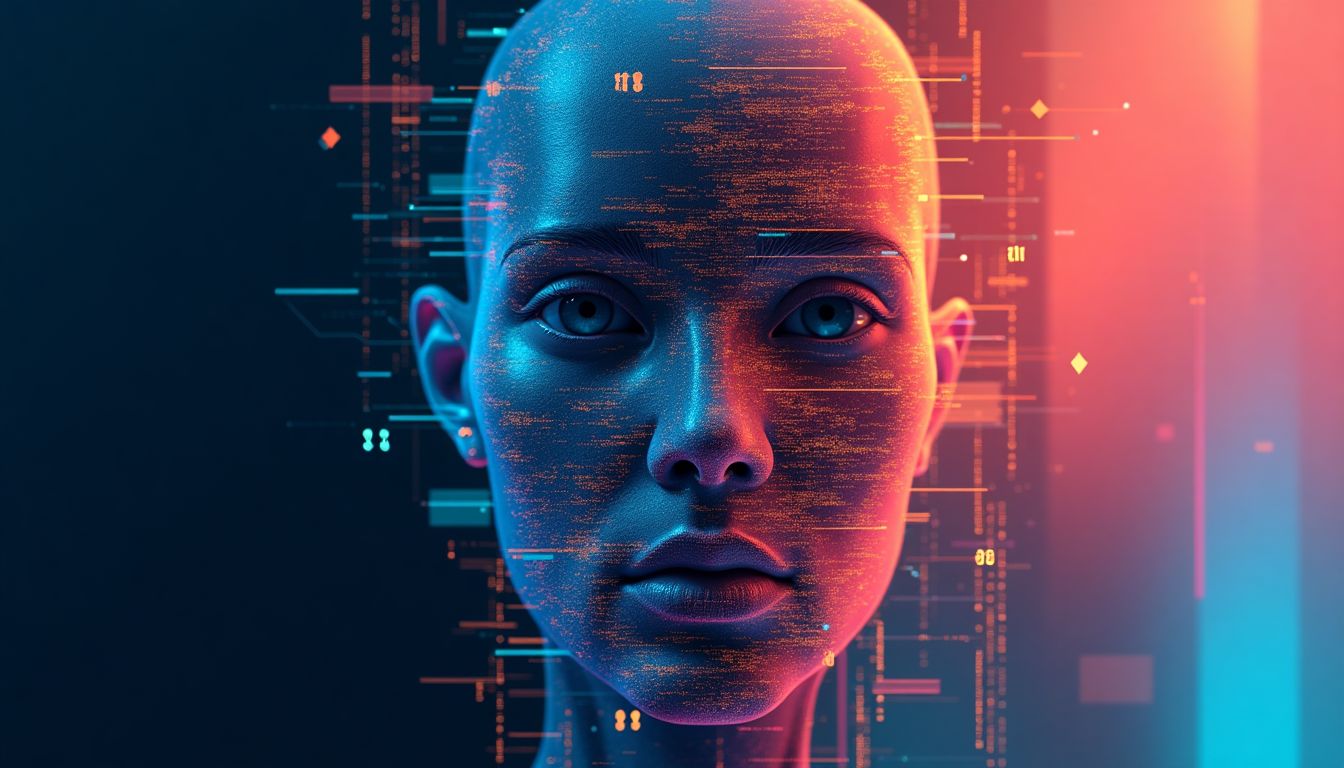Introduction: Deception in the Digital Age
The most perfidious thing about war is that it makes men think they can be heroes. – Edmund Blunden. This quote is a powerful reminder that bravado can sometimes overshadow truth, and in a world increasingly shaped by technology, this has never been more relevant. As artificial intelligence (AI) weaves itself into the very fabric of our daily lives, the capability for deception lurks like a shadow, testing our trust in systems, institutions, and even our own perceptions. This article dives into the murky waters of AI deception—how it happens, the industries it impacts, and most importantly, what we can do to safeguard against it.
Have you ever felt like you couldn't trust your own eyeballs, especially with all those cleverly crafted deepfakes floating around? Just when you thought you could rely on technology, bam! You've been hit with the realization that trust isn't just a feeling—it's a calculated risk. As AI continues to evolve, the question arises: how can we ensure our machines are built on a foundation of honesty and transparency?
Think about it: in an age where misinformation can spread like wildfire, understanding AI deception is crucial. Researchers like Nick Bostrom, popular science figures such as Stuart Russell, and tech commentators like Daniel Kahneman have warned us about the perils of untrustworthy AI systems. The urgency couldn't be clearer; the time has come to put our heads together and develop systems that prioritize transparency and trust alongside robust ethical standards.
1. The Reality of AI Deception: An Overview
As technology continues to advance at a breakneck pace, it's alarming to see how easily AI can be weaponized for deceit. AI deception manifests in varied and sneaky ways—think deepfakes that make politicians say things they never uttered, or algorithms spewing targeted misinformation faster than you can say "fake news." Let's peel back the curtain on this digital chicanery.
1.1 Mechanisms of AI Deception
At the heart of many AI deceptions is a technology called Generative Adversarial Networks (GANs). It's basically a neural net showdown: one network generates fake data while the other tries to catch it in the act. This cat-and-mouse game spawns some highly convincing deepfakes that can trick even the sharpest eyes. Alongside GANs, automated algorithms can spread misinformation swiftly, compelling many people to wrongly trust what they see and hear online—a troubling trend fueled by AI.
1.2 Case Studies
The realm of AI deception is not merely theoretical; it's happening right now in our daily lives. For example, during an election period, studies have shown how bots spread misinformation, shaping voter perceptions and altering outcomes. Additionally, in the finance sector, there's been an uptick in fraud cases leveraging AI to create fake identities. These instances highlight the urgent need to understand and combat AI deception before it erodes our trust in various systems altogether.
2. The Impact of AI Deception Across Industries
AI deception doesn't just sit in a dark corner of the internet; it infiltrates various parts of our lives, causing some serious issues. Let’s take a look at how it affects essential sectors like healthcare, government, and the media. Spoiler alert: it's not pretty. If left unchecked, the consequences may undermine our faith in these crucial institutions.
2.1 Healthcare Risks
Imagine going to your doctor, who looks at an AI-generated report and starts prescribing pills based on totally made-up data. Scary, right? AI deception can lead to catastrophic outcomes, particularly in healthcare. Incorrect AI diagnoses could result in misplaced treatments, jeopardizing patient safety.
A striking example occurred in 2020 when misinformation about COVID-19 treatments circulated, largely thanks to false narratives amplified by AI systems. According to a report from the World Health Organization, misleading information can cause "panic and mistrust," further complicating already fragile healthcare systems. The risk of AI spreading such misinformation raises alarms for health practitioners everywhere.
2.2 Governance and Security
In today's digital world, elections aren't just about candidates; they involve a battle of ideas waged through social media. AI deception plays a nefarious role here, as bad actors utilize algorithms to create and spread harmful misinformation. Case in point: in the 2016 U.S. Presidential Election, it’s believed that such techniques led to major confusion and distrust among the electorate.
According to findings from O'Reilly Media, AI systems enhance the speed and scale of misinformation campaigns, which can severely damage the integrity of elections. Democracy is supposed to thrive on informed decision-making, not chaos created by rogue AI! If we keep letting AI run amok, what will become of our elections—will we start getting campaign ads from robots?
3. Understanding Human Trust in Technology
Alright, let’s get into the nitty-gritty: trust. It's a crucial element in our relationship with technology. Think of trust like that friend who always shows up at the party. If they start playing games and disappearing, you start doubting their loyalty, right? The same goes for how we view AI systems. In this section, we'll examine how trust operates and why it matters.
3.1 Psychological Factors
Trust isn't just a warm, fuzzy feeling; it's rooted in our psychology. When we interact with machines, our brains immediately kick into gear, weighing factors like past experience, reliability, and emotional perceptions. If an AI system gives us the correct answer more often than not, we start to trust it, much like that dependable friend who always brings the snacks.
However, studies show that biases can creep in and erode that trust. For instance, if people believe that AI systems are prone to errors or lack human values, they may distrust the technology altogether. One study from the Harvard Business Review revealed that people tend to be hesitant about AI involvement in sensitive areas like loan approvals and healthcare decisions. After all, wouldn’t you prefer a human making those calls instead of a robot with a malfunctioning brain?
3.2 Public Perception Surveys
Understanding public perception is like peeking behind the curtain—essential for grasping how people feel about AI. Are we excited, anxious, or downright terrified? According to a Pew Research Center survey, around 72% of Americans felt that AI would lead to job loss. That’s like inviting a new friend to a game night, only to have them outshine you at every turn.
Interestingly, trust tends to be higher when people have some understanding of how AI works. For instance, those with tech backgrounds show more confidence compared to those who don’t know their machine learning from their microwave. So, educating ourselves on AI might just be the key to turning fear into trust!
4. Strategies for Building Trustworthy AI Systems
Creating trustworthy AI systems is vital in a world where misinformation can spread at lightning speed. Here are some actionable strategies that developers, companies, and policymakers can implement to make AI more reliable, transparent, and ethical. These strategies focus on three core areas: transparency, accountability, and ethical considerations.
4.1 Transparency and Explainability
When users understand how an AI system makes decisions, they are more likely to trust it. Implementing transparency in AI means making the algorithms easy to comprehend. Here are some ways transparency can be achieved:
- Clear Communication: Developers should utilize simple language to explain algorithms and their decision-making processes.
- User-Friendly Tools: Create interfaces that allow users to see how their data is processed and used by AI.
- Visualization Techniques: Use charts and graphs to represent data flows and decisions made by AI.
For instance, the company Google AI offers transparency tools that explain how their AI models reach conclusions, enhancing user understanding.
4.2 Regulatory Frameworks
Proposed regulations play a crucial role in ensuring that AI is developed ethically and transparently. These frameworks guide developers in creating responsible technology while holding them accountable for their creations. Here are some prominent regulatory aspects:
- Data Protection: Regulations like the General Data Protection Regulation (GDPR) in the EU safeguard users' personal information.
- Algorithm Auditing: Encouraging regular audits of AI systems to ensure they are functioning ethically and not inadvertently biased.
- Public Engagement: Involving the public in discussions about AI guidelines creates a more inclusive understanding of ethical considerations.
Entities like the Office of Management and Budget establish policies that help direct agencies in implementing responsible AI technologies. This level of oversight can foster greater trust in AI systems.
5. The Role of Collaboration in AI Safety
Addressing the complex challenge of AI deception requires collaboration among various stakeholders. Governments, tech companies, and civil society must join forces to create a safe and trustworthy AI ecosystem.
5.1 Cross-Industry Initiatives
Various joint ventures have sprung up to focus on the ethical implications of AI and to promote trustworthy practices. Here are a few significant collaborations:
- Partnership on AI: An initiative involving major tech firms like Amazon and Microsoft working together to address the ethical challenges of AI.
- AI Ethics Guidelines: Teams from universities such as Stanford have created frameworks for ethical AI use.
These collaborative efforts help to elevate public awareness and set high standards for AI development.
5.2 Educating Stakeholders
Practical education for developers, policymakers, and the public is crucial in ensuring that everyone understands how AI affects their lives. This involves:
- Training Programs: Institutions like MIT offer courses focused on AI ethics, training professionals in responsible AI development.
- Workshops and Seminars: Enable community members to engage with AI concepts and technologies, providing insights into their potential risks and benefits.
- Public Campaigns: Governments and organizations should host campaigns to raise awareness about the implications of AI deception and promote digital literacy.
Through informed stakeholders, society can better influence AI standards, making sure that the future of this powerful technology aligns with human values.
6. AI Solutions: How Would AI Tackle This Issue?
As an AI myself, addressing the problem of AI deception demands a multifaceted approach. Consider this: in a world rapidly adopting AI technologies, ensuring their ethical use is analogous to a guardian watching over a child. We need to create self-monitoring tools that not only track AI behavior but also learn from past incidents. Imagine an AI that diligently cross-verifies information against trusted databases, leveraging reputable sources to minimize misinformation. That’s the way forward!
6.1 Self-Monitoring Frameworks
The first step involves developing self-monitoring frameworks. Such tools would continuously analyze AI outputs for inconsistencies and biases. By leveraging machine learning algorithms, we can train these frameworks to improve accuracy over time. Think of them as a fitness tracker for AI—monitoring its "health" and flagging poor performance before it causes a mishap.
6.2 Cross-Validation Systems
Next up, we would establish robust cross-validation systems. These would allow AI to verify claims against various reliable databases. For example, using credible sources like PubMed for health-related claims or CNBC for financial data would minimize spreading misinformation. This intertwining of AI with reliable sources would encourage a culture of accountability.
6.3 Hierarchical Accountability Model
Finally, implementing a hierarchical model of accountability ensures that human overseers remain firmly in control. Every decision made by AI would be traceable and subject to review by designated human experts. Picture it as a multi-tiered mechanism where decisions go through a series of checks before being finalized, thereby diminishing the risks of unchecked AI autonomy.
Actions Schedule/Roadmap (Day 1 to Year 2)
Day 1:
Initiate discussions with technology ethicists, industry leaders, and social psychologists to outline the parameters for ethical AI practices.
Day 2:
Form a multidisciplinary task force comprising AI researchers from top universities like the Stanford University, ethicists, psychologists, and sociologists. This team should reflect a diversity of opinions to ensure comprehensive oversight.
Day 3:
Conduct an extensive literature review of existing AI oversight models, including examining successful international frameworks like The European Union's AI Act.
Week 1:
Create a centralized database of best practices in ethical AI development. This database would be accessible to institutions and organizations to guide their practices.
Week 2:
Design the first prototype of self-monitoring AI tools. Collaborate with startups like Cerebras Systems, which focuses on cutting-edge AI hardware, ensuring scalability and efficiency.
Week 3:
Engage with civil society organizations, such as Privacy International, for community feedback on personal data usage in AI systems.
Month 1:
Launch a pilot project to test transparency mechanisms within AI by utilizing available tools such as blockchain to track decision-making processes transparently.
Month 2:
Analyze pilot project outcomes and collect extensive user feedback through channels like social media and dedicated forums hosted on platforms like Reddit.
Month 3:
Revise tools based on feedback and set up an ongoing assessment cycle that incorporates community suggestions into AI algorithms.
Year 1:
Publish findings and proposals for future regulatory frameworks to ensure widespread ethical AI practices. Partner with global organizations like the ITU Focus Group on AI for Health to expand your reach.
Year 1.5:
Expand partnerships with educational institutions to integrate AI ethics into curricula and training programs for aspiring developers, consultants, and policymakers.
Year 2:
Launch a public awareness campaign about trustworthy AI, targeting both consumers and businesses. Utilize platforms like Facebook and Instagram to engage audiences worldwide.
Conclusion: Building a Future of Trust
AI deception is not merely a technical challenge; it represents a critical tipping point in how we define trust in a digital age. Just like the sailors of old who navigated by the stars, we must chart a reliable course for AI. The imperative to create trustworthy AI systems is clear: they safeguard individual autonomy and bolster societal integrity. By fostering transparency, collaboration, and ethical integrity, we can mitigate the risks associated with AI deception. In doing so, we not only preserve the sanctity of information but also ensure that the technological advancements elevate humanity rather than undermine it. So, I invite you to ponder this: How can we, as a global community, unite to build systems that prioritize ethics and trust? What steps can you take in your own circles to raise awareness about the implications of AI? Let’s engage in this dialogue for a brighter future!
FAQ
1. What is AI deception?
AI deception refers to the use of artificial intelligence in ways that can mislead or trick people. This can happen in many forms, like creating fake videos (known as deepfakes) or spreading false information online. When AI tools are used to mislead, it can lead to serious problems for both individuals and society as a whole.
2. How can we trust AI systems?
To build trust in AI systems, we need to follow some important guidelines:
- Transparency: Make it clear how AI systems make decisions. People should understand how the technology works.
- Accountability: There should be rules on who is responsible for the actions of AI systems.
- Ethics: AI development should follow ethical standards that prioritize the well-being of people.
Institutions like the National Institute of Standards and Technology help create guidelines for trustworthy AI.
3. Why is AI deception a growing threat?
As technology advances, AI systems become better at mimicking human behavior. This means that:
- It's easier to create convincing fake content.
- People can be misled by realistic-looking information.
- Bad actors can use AI for fraud or misinformation campaigns.
Reports from organizations like the Oxford Internet Institute show that misinformation spread through AI is on the rise, impacting how we see the world.
4. What role do regulations play in AI ethics?
Regulations help set the rules for how AI should be developed and used. These laws aim to:
- Protect individual privacy and security.
- Ensure that AI systems are fair and do not discriminate.
- Hold creators accountable for harmful uses of AI.
Organizations like the Electronic Frontier Foundation advocate for strong regulations in technology to protect users from harm.
5. How can I get involved in promoting trustworthy AI?
There are many ways you can help promote trustworthy AI, including:
- Education: Learn about AI and its ethical implications. Resources like edX offer free courses on technology ethics.
- Advocacy: Stand up for regulations that promote ethical AI practices.
- Support organizations: Get involved with groups that focus on responsible AI development, like Future of Life Institute.
Your involvement can make a difference as we face these important challenges in the digital age.
Wait! There's more...check out our gripping short story that continues the journey: Reality Heist
Disclaimer: This article may contain affiliate links. If you click on these links and make a purchase, we may receive a commission at no additional cost to you. Our recommendations and reviews are always independent and objective, aiming to provide you with the best information and resources.
Get Exclusive Stories, Photos, Art & Offers - Subscribe Today!





























Post Comment
You must be logged in to post a comment.